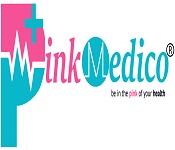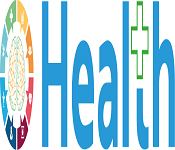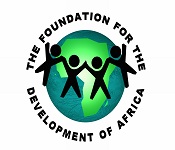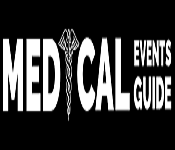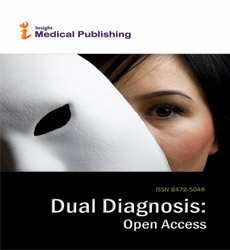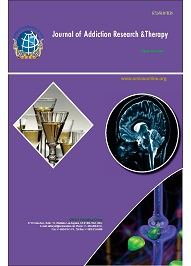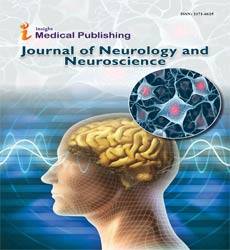Theme: Integrative learning of Substance abuse and Mental Illness under Dual Diagnosis
Dual Diagnosis Disorders 2018
Dual diagnosis is when a person is affected by both mental illness and substance use (also referred to as the use of alcohol and/or drugs). Dual diagnosis is a term typically used to refer to individuals who are living with a mental illness and substance abuse issue at the same time, and as a result are suffering from co-morbidity or co-occurring disorder (COD). Mental illness and substance use interact to make each diagnosis worse and to have serious, adverse effects on many areas of functioning (including work, relationships, health, and safety). Recovery from mental illness is much more challenging for people with a dual diagnosis, and the issues faced by families of people with dual diagnosis can be more complex and confusing than mental illness alone. Research has recently determined that people with mental illness use drugs and alcohol for the same reason as other people to feel better or different, relax, have fun and be part of a group. According to Psychology Today, “Clients with co-occurring disorders (COD) have one or more disorders relating to the use of alcohol and/or other drugs of abuse as well as one or more mental disorders, and a diagnosis of co-occurring disorders occurs when at least one disorder of each type can be established independent of the other and is not simply a cluster of symptoms resulting from the one disorder” (Psychology Today, 2014). Most experts believe the initial condition, whether it’s a mental disorder or substance use issue, tends to influence a person’s path to the second condition.
Related Conferences:
12th International Conference on Alzheimer’s Disease & Dementia October 29-31, 2018 Valencia, Spain
21st World Congress on Neurology and Therapeutics March 15-17, 2018 London, UK
3rd International Conference on Spine and Spinal Disorders June 11-12, 2018 London, UK
4th International Conference on Central Nervous System Disorders & Therapeutics November 12-14, 2018 Edinburgh, Scotland.
A mental illness is a disease that causes mild to severe disturbances in thought and/or behaviour, resulting in an inability to cope with life’s ordinary demands and routines.
There are more than 200 classified forms of mental illness. Some of the more common disorders are depression, bipolar disorder, dementia, schizophrenia and anxiety disorders. Symptoms may include changes in mood, personality, personal habits and/or social withdrawal.
Mental health problems may be related to excessive stress due to a particular situation or series of events. As with cancer, diabetes and heart disease, mental illnesses are often physical as well as emotional and psychological. Mental illnesses may be caused by a reaction to environmental stresses, genetic factors, biochemical imbalances, or a combination of these. With proper care and treatment many individuals learn to cope or recover from a mental illness or emotional disorder.
Additionally, mental illness and substance use interact to make each diagnosis worse and to have serious, adverse effects on many areas of functioning, including work, relationships, health, and safety.
Related Conferences:
24th International Conference on Neuroscience and Neurochemistry July 23-25, 2018 || BIRMINGHAM || UK
10th International Conference on Vascular Dementia February 22-23, 2018 Paris, France
7th International Conference on Brain Injury and Neurological Disorders April 10-12, 2018 Amsterdam, Netherlands
22nd International Conference on Neurology & Neurophysiology April 23-24, 2018 Rome, Italy
Substance use disorders, which are defined as mild, moderate, or severe to indicate the level of severity, which is determined by the number of diagnostic criteria met by an individual. Substance use disorders occur when the recurrent use of alcohol and/or drugs causes clinically and functionally significant impairment, such as health problems, disability, and failure to meet major responsibilities at work, school, or home. According to the DSM-5, a diagnosis of substance use disorder is based on evidence of impaired control, social impairment, risky use, and pharmacological criteria.
Related Conferences:
7th World Congress on Addictive Disorders & Addiction Therapy July 16-18, 2018 London, UK
7th International Conference on Neurological Disorders & Stroke September 20-21, 2018 Rome, Italy
21st World Congress on Neurology and Therapeutics March 15-17, 2018 London, UK
3rd International Conference on Neuropsychiatry and Sleep Medicine September 21-22, 2018 Philadelphia, Pennsylvania, USA
Bipolar disorder requires treatment of depressive and manic or hypomanic episodes together with long-term treatment to prevent future episodes, both syndromal and sub-syndromal. In recent years the importance of long-term treatment (that is, maintenance treatment) has been emphasised by several guidelines. The need for maintenance treatment is supported by the desire to prevent the costs of future episodes, that is, the intangible suffering to patients and their families and the economic burden of direct and indirect costs. In addition maintenance treatment may reduce long-term impairment associated with the bipolar disorder. There is evidence that functional impairment in patients who have recovered from acute episodes and are asymptomatic is related to the number of previous depressive episodes. The tendency for episodes to become more frequent with time also supports the rationale for maintenance treatment.
In the last decade, evidence from RCTs has accumulated regarding the effectiveness of several ‘new’ agents in the treatment of bipolar disorder. These include valproate (in various forms), lamotrigine and various atypical antipsychotics. The active control arms in several such studies have provided further evidence for the efficacy of ‘older’ treatments, in particular haloperidol (a conventional antipsychotic) in the treatment of mania and lithium in the prophylaxis of mania.
Related Conferences:
4th International Conference on Depression, Anxiety and Stress Management May 10-11, 2018 Frankfurt, Germany
20th Annual Conference of the International Society for Bipolar Disorders March 7-10, 2018
20th International Conference on Bipolar Disorder and Depression January22-23, 2018
Anxiety and Depression Conference 2018 April 5-8, 2018
20th International Conference on Anxiety Disorders February 15-16, 2018
EPIDEMIOLOGY AND DUAL DISORDERS
The co-occurrence of a severe mental illness and a substance abuse or dependence disorder is common enough to be considered the expectation more than the exception. Substance use disorders can occur at any phase of mental illness.
Causes of this comorbidity may include self-medication, genetic vulnerability, environment or lifestyle, underlying shared origins, and/or a common neural substrate. The consequences of dual diagnosis include poor medication compliance, physical comorbidities, poor health, poor self-care, increased risk of suicide or risky behaviour, and even possible incarceration.. Screening, assessment, and integrated treatment plans for dual diagnosis to address both the substance use disorder and the mental illness are strongly recommended.
The strongest associations involve externalizing mental disorders and alcohol-drug dependence. Mental disorders are associated with alcohol-drug use, problems among users, dependence among problem users, and persistence among people with lifetime dependence. These dual diagnoses are associated with severity and persistence of both mental and alcohol-drug disorders. A wider range of mental disorders is associated with nicotine dependence. Prospective studies confirm this temporal order, although significant predictive associations are reciprocal. Analyses comparing active and remitted mental disorders suggest that some primary mental disorders are markers and others are causal risk factors for secondary substance disorders. Epidemiologic research can be used to help target and evaluate interventions aimed at preventing secondary substance use disorders by treating early-onset primary mental disorders.
Related Conferences:
12th International Conference on Alzheimer’s Disease & Dementia October 29-31, 2018 Valencia, Spain: 21st World Congress on Neurology and Therapeutics March 15-17, 2018 London, UK: 3rd International Conference on Spine and Spinal Disorders June 11-12, 2018 London,UK: 4th International Conference on Central Nervous System Disorders & Therapeutics November 12-14, 2018 Edinburgh, Scotland.
27th International Conference on Neurology and Cognitive Neuroscience October 18-19, 2018 Warsaw, Poland
Psychosis is a brain-based condition that is made better or worse by environmental factors - like drug use and stress.
Schizophrenia is a serious disorder which affects how a person thinks, feels and acts. Someone with schizophrenia may have difficulty distinguishing between what is real and what is imaginary; may be unresponsive or withdrawn; and may have difficulty expressing normal emotions in social situations.
One frequently cited statistic is that 1% of the population is diagnosed with Schizophrenia in their lifetime, but actually 3.5% of the population experiences psychosis. Hearing voices and seeing things that aren’t there are more common than we think. While these experiences can be scary and confusing, it is possible to recover and getting better, especially when we tackle issues early
Scientists recognize that the disorder tends to run in families and that a person inherits a tendency to develop the disease. Similar to some other genetically-related illnesses, schizophrenia may appear when the body undergoes hormonal and physical changes (like those that occur during puberty in the teen and young adult years) or after dealing with highly stressful situations.
Related Conferences:
24th International Conference on Neuroscience and Neurochemistry July 23-25, 2018 || BIRMINGHAM || UK
10th International Conference on Vascular Dementia February 22-23, 2018 Paris, France
7th International Conference on Brain Injury and Neurological Disorders April 10-12, 2018 Amsterdam, Netherlands
22nd International Conference on Neurology & Neurophysiology April 23-24, 2018 Rome, Italy
Addiction is a condition that results when a person ingests a substance (for example, alcohol, cocaine, nicotine) or engages in an activity such as gambling, sex, shopping that can be pleasurable but the continuation of which becomes compulsive and interferes with ordinary responsibilities and concerns, such as work, relationships, or health. People who have developed an addiction may not be aware that their behaviour is out of control and causing problems for themselves and others. This is a biological state in which the body adapts to the presence of a drug so that drug no longer has the same effect, otherwise known as tolerance. Another form of physical addiction is the phenomenon of overreaction by the brain to drugs (or to cues associated with the drugs).
The vulnerability of the nervous system to both temporary changes and permanent damage from a wide variety of agents is increasingly evident. For thousands of years humans have searched out agents that affect the nervous system. Many people today are regular users of alcohol, caffeine, or other agents designed to affect the nervous system. Industrialization ushered in an era of rapid development of new chemicals, often accompanied by human exposure that we learned, sometimes through tragic experience, can irreparably damage the nervous system. No one can reach his or her full genetic potential with a damaged nervous system. As a consequence, neurotoxicology developed as a discipline in the 1970s to advance our understanding of the effects of chemicals on the nervous system.
Related Conferences:
7th World Congress on Addictive Disorders & Addiction Therapy July 16-18, 2018 London, UK
7th International Conference on Neurological Disorders & Stroke September 20-21, 2018 Rome, Italy
21st World Congress on Neurology and Therapeutics March 15-17, 2018 London, UK
3rd International Conference on Neuropsychiatry and Sleep Medicine September 21-22, 2018 Philadelphia, Pennsylvania, USA
Depression (major depressive disorder) is a common and serious medical illness that negatively affects how the person feel the way you think and how you act. Fortunately, it is also treatable. Depression causes feelings of sadness and/or a loss of interest in activities once enjoyed. It can lead to a variety of emotional and physical problems and can decrease a person’s ability to function at work and at home
Anxiety is an emotion characterized by feelings of tension, worried thoughts and physical changes like increased blood pressure.
People with anxiety disorders usually have recurring intrusive thoughts or concerns. They may avoid certain situations out of worry. They may also have physical symptoms such as sweating, trembling, dizziness or a rapid heartbeat.
Related Conferences:
4th International Conference on Depression, Anxiety and Stress Management May 10-11, 2018 Frankfurt, Germany
20th Annual Conference of the International Society for Bipolar Disorders March 7-10, 2018
20th International Conference on Bipolar Disorder and Depression January22-23, 2018
Anxiety and Depression Conference 2018 April 5-8, 2018
20th International Conference on Anxiety Disorders February 15-16, 2018
BORDERLINE PERSONALITY DISORDER
BPD is a serious mental illness characterized by pervasive instability in moods, interpersonal relationships, self-image, and behaviour.
BPD, originally thought to be at the "border" of psychosis and neurosis, suffer from difficulties with emotion regulation. While less well known than schizophrenia or bipolar disorder, BPD affects two percent of adults. People with BPD exhibit high rates of self-injurious behaviour, such as cutting and, in severe cases, significant rates of suicide attempts and completed suicide. Impairment from BPD and suicide risk are greatest in the young-adult years and tend to decrease with age. BPD is more common in females than in males, with 75 percent of cases diagnosed among women.
People with borderline personality disorder often need extensive mental health services and account for 20 percent of psychiatric hospitalizations. Yet, with help, many improve over time and are eventually able to lead productive lives.
Related Conferences:
24th International Conference on Neuroscience and Neurochemistry July 23-25, 2018 || BIRMINGHAM || UK
10th International Conference on Vascular Dementia February 22-23, 2018 Paris, France
7th International Conference on Brain Injury and Neurological Disorders April 10-12, 2018 Amsterdam, Netherlands
22nd International Conference on Neurology & Neurophysiology April 23-24, 2018 Rome, Italy
Pharmacological management of both the psychiatric and the substance use disorder is an important foundation of the treatment of clients with co-occurring severe mental illness and substance use disorder. In all of the above psychosocial studies, clients in psychosocial treatment research also received medication management, which was rarely accounted for in analyses. Research on the effects of medications themselves, however, is in its infancy. Thus far research suggests two main points. First, medications shown to be effective for the treatment of alcohol disorders in the general population, such as disulfuram and naltrexone, are probably effective also in clients with serious mental illness Second, some medications that treat the mental illness may lead to reduction in the severity of the substance use disorder.
Antidepressants appear to reduce not only symptoms of depression but also alcohol use in clients with major depression and alcohol disorder Mood stabilizers are active not only on mania but also on alcohol use in clients with bipolar disorder and comorbid alcohol dependence Typical antipsychotics improve the symptoms of schizophrenia but have little effect on co-occurring substance use. Most of the newer (atypical) antipsychotics are equally effective as the typical antipsychotics in improving schizophrenia symptoms and may offer some benefit in reducing craving or substance use, but research is preliminary Clozapine is clearly the most powerful drug in treating schizophrenia symptoms and, at least in quasi-experimental studies, appears to be at the same time the most effective antipsychotic medication in relation to substance use.
Related Conferences:
21st World Congress on Neurology and Therapeutics March 15-17, 2018 London, UK
3rd International Conference on Neuropsychiatry and Sleep Medicine September 21-22, 2018 Philadelphia, Pennsylvania, USA
4th International Conference on Depression, Anxiety and Stress Management May 10-11, 2018 Frankfurt, Germany
20th Annual Conference of the International Society for Bipolar Disorders March 7-10, 2018
Down syndrome is a genetic disorder and the most common autosomal chromosome abnormality in humans, where extra genetic material from chromosome 21 is transferred to a newly formed embryo. These extra genes and DNA cause changes in development of the embryo and foetus resulting in physical and mental abnormalities. Each patient is unique and there can be great variability in the severity of symptoms.
Normally, the human body has 23 pairs of chromosomes called autosomes and two sex chromosomes allosomes. At conception, a new cell is formed that receives one copy of each chromosome from the sperm and one copy from the egg. The new cell divides and multiplies to form an embryo and ultimately a foetus and new human. Each cell contains the exact same genetic material as the original 48 chromosomes, carrying the same genes and DNA.
In patients with Down syndrome, an error occurs in the coming together of chromosome 21. The extra genetic material is responsible for the developmental abnormalities that occur. Instead of 46 chromosomes plus two sex chromosomes, there are 47.
Related Conferences:
20th International Conference on Bipolar Disorder and Depression January22-23, 2018
Anxiety and Depression Conference 2018 April 5-8, 2018
20th International Conference on Anxiety Disorders February 15-16, 2018
BEHAVIOURAL ADDICTIONS AND DUAL DISORDERS
Addiction can occur in many forms. Often, it is assumed that physical dependence characterized by withdrawal symptoms is required in order for someone to be diagnosed with an addiction disorder, but the fact is that behavioural addiction can occur with all the negative consequences in a person’s life minus the physical issues faced by people who compulsively engage in drug and alcohol abuse. It is the compulsive nature of the behaviour that is often indicative of a behavioural addiction, or process addiction, in an individual. The compulsion to continually engage in an activity or behaviour despite the negative impact on the person’s ability to remain mentally and/or physically healthy and functional in the home and community defines behavioural addiction. The person may find the behaviour rewarding psychologically or get a “high” while engaged in the activity but may later feel guilt, remorse, or even overwhelmed by the consequences of that continued choice. Unfortunately, as is common for all who struggle with addiction, people living with behavioural addictions are unable to stop engaging in the behaviour for any length of time without treatment and intervention.
Related Conferences:
12th International Conference on Alzheimer’s Disease & Dementia October 29-31, 2018 Valencia, Spain: 21st World Congress on Neurology and Therapeutics March 15-17, 2018 London, UK: 3rd International Conference on Spine and Spinal Disorders June 11-12, 2018 London, UK: 4th International Conference on Central Nervous System Disorders & Therapeutics November 12-14, 2018 Edinburgh, Scotland.
27th International Conference on Neurology and Cognitive Neuroscience October 18-19, 2018 Warsaw, Poland
Often treatment for people with a dual diagnosis is approached separately, but research is showing that an integrated approach may be more effective. With an integrated approach, a plan for healing from mental illness is combined with a plan for recovering from addiction. If an individual is in a rehab setting, the same doctors and health professionals address both sets of issues. A 12-step model, for example, might be used to address both. Both the mental health issues and the substance abuse issues take place in the same person, and frequently interact on triggering the other and vice versa. For the whole person to become well, a whole-person approach makes sense building trust, respect and hope along the way.
Related Conferences:
12th International Conference on Alzheimer’s Disease & Dementia October 29-31, 2018 Valencia, Spain:
21st World Congress on Neurology and Therapeutics March 15-17, 2018 London, UK:
3rd International Conference on Spine and Spinal Disorders June 11-12, 2018 London, UK:
4th International Conference on Central Nervous System Disorders & Therapeutics November 12-14, 2018 Edinburgh, Scotland.
There are two types of elderly addicts: those who become addicted to drugs or alcohol before age 65, termed “early-onset addicts”, and those who do so after age 65, termed “late-onset addicts.” Early-onset addicts are those who have abused drugs and alcohol throughout their lifetime, becoming dependent and addicted to illicit substances at a younger age and perpetuating this addiction as age advances. This group of elderly addicts is thought to make up two-thirds of the geriatric alcoholic population and may have more physical and psychiatric issues than late-onset addicts, according to the Psychiatric Times.
The New York Times further publishes that between 14 and 20 percent of the elderly population have suffered from either a mental health disorder, substance abuse disorder, or both, according to a national survey in 2010. Mental illness often co-occurs with substance abuse. Those diagnosed with a mood disorder may be twice as likely to also battle a drug abuse disorder, NIDA reports. In fact, psychiatric disorders and substance abuse may occur as often as between 21 and 66 percent of the time. As we age, physical and mental capacities may deteriorate further blurring the lines between substance dependence and mental illness.
Stressful life changes that often occur as we age may increase the incidence of drug or alcohol abuse, which can develop into a late-onset addiction. For instance, as age advances, loved ones or significant others may pass away, living situations can change, retirement begins, and physical maladies may increase. Drinking or using drugs may begin as a method of coping with these difficult psychological and physical changes.
Related Conferences:
24th International Conference on Neuroscience and Neurochemistry July 23-25, 2018 || BIRMINGHAM || UK
10th International Conference on Vascular Dementia February 22-23, 2018 Paris, France
7th International Conference on Brain Injury and Neurological Disorders April 10-12, 2018 Amsterdam, Netherlands
22nd International Conference on Neurology & Neurophysiology April 23-24, 2018 Rome, Italy
Clinicians from both drug and alcohol services and mental health services have long recognized that neither service area provides adequate clinical care to those clients who have a dual diagnosis of substance abuse and mental illness. It is now more than 10 years since a ground-breaking Australian study recognized this. To ascertain whether there has been improvement in the service management of clients who have a dual diagnosis, and to determine the best practice interventions in the area of mental health nursing, we undertook a review of the literature. The databases CINAHL, MEDLINE, PsycARTICLES and PsychINFO were searched and 185 articles met the inclusion criteria. From this review, it seems that gaps still remain in the provision of services and that mental health nurses might be best placed to provide integrated care to those clients who have a dual diagnosis and present to mental health services. This requires mental health nurses to have skills in substance use detection and knowledge of potential care implications for the client in the context of their substance use.
Related Conferences:
7th World Congress on Addictive Disorders & Addiction Therapy July 16-18, 2018 London, UK
7th International Conference on Neurological Disorders & Stroke September 20-21, 2018 Rome, Italy
21st World Congress on Neurology and Therapeutics March 15-17, 2018 London, UK
3rd International Conference on Neuropsychiatry and Sleep Medicine September 21-22, 2018 Philadelphia, Pennsylvania, USA
CLINICAL INTERVENTIONS & CASE REPORTS
The comorbid psychiatric conditions were equally represented, with schizophrenia, bipolar I disorder, psychotic disorder, and posttraumatic stress disorder and borderline personality disorder as the most common disorders. All patients presented substance use disorders, with alcohol abuse (71.4%) and cocaine abuse (42.9%) as the most prevalent ones. During a severe dual pathology program, it was noted that a considerable number of severe dual pathology cases first become noticed at an emergency mental health unit. The patient's cooperation while in the ER is essential for detecting undiagnosed dual-pathology cases or managing clinical decompensation episodes in these patients. The use of inhaled loxapine might be of a great help to attain this goal. Although our data refer to a limited number of cases, this case series represents the overall clinical practice and demonstrates the effectiveness of inhaled loxapine for agitation in dual patients who are seen at a hospital. Afterward, an adequate management of the comorbid disorders with the available integrated resources would be necessary to improve treatment adherence and outcome in patients with dual diagnosis.
Related Conferences:
12th International Conference on Alzheimer’s Disease & Dementia October 29-31, 2018 Valencia, Spain:
21st World Congress on Neurology and Therapeutics March 15-17, 2018 London, UK:
3rd International Conference on Spine and Spinal Disorders June 11-12, 2018 London,UK:
4th International Conference on Central Nervous System Disorders & Therapeutics November 12-14, 2018 Edinburgh, Scotland.
We extend a blithesome welcome to our International conference on Dual Diagnosis and Disorders Conference Which is going to be held on November 12-13, 2018 at Melbourne, Australia.
Dual Diagnosis conference will give a perfect platform for sharing and developing innovative ideas on the latest developments and future perspectives in the field of neurology and neurophysiology for the treatment of various Neurological disorders. Attending the Dual Diagnosis 2018 is an investment in your career growth. It’s the best way to express your passion towards the Neurology research and update your skills and enhance your knowledge.
Dual Diagnosis 2018 participants include Professors, Researchers, Physicians, Business Delegates, Scientists, students all over the world. The goal of the Dual Diagnosis 2018 is to provide you with a rare opportunity to build on what you already know in the research and development of new therapies and techniques and accelerate efforts to enhance health and well-being.
Dual Diagnosis 2018 is supported with related journals and their editorial board members which provide a chance of meeting them, along with experts in Dual Diagnosis, Neurological sciences and Pharmacological sciences.
In order to accelerate the research in the field of Neuroscience Conference Series organizes different conferences worldwide.
Conference series LLC takes a great honor in announcing the commencement of 2nd International Conference and Exhibition on Dual Diagnosis slated on May 18-19, 2017 Munich, Germany Neurology-2017 has received a benevolent response from all over the world. This has been conducted with the aim and the categorical intent of promoting the developments of new perceptions and ideas for exploring the high level of knowledge reached by scientific community on Neuroscience. The extremely illustrious conference hosted by Conference series LLC was marked with the attendance of young and brilliant researchers, clinicians, business delegates and talented student communities.
The conference was organized around the theme scientific quest to enhance the fascinating and mystified Neurons. The event implanted a firm relation of upcoming strategies in the field of Neurology with the scientific community. The conceptual and applicable knowledge shared, will also foster organizational collaborations to nurture scientific accelerations.
This annual conference brought together eminent scientists, Neurologist, Neuroscience researchers, health care professionals, University professors, Neuroscience professionals in which many issues in Neuroscience research were discussed in depth to provide up-to-date information to the world. On the other hand, the meeting provided an opportunity for an open and animated sharing of ideas and experiences.
The conference witnessed an amalgamation of peerless speakers, who enlightened the crowd with their enviable research knowledge and on various alluring topics related to the field of Neuroscience. The eminent personalities at the conference were Melissa Alton LMHC, NCC, CCMHC, EMDR in Private Practice, USA, Diane Mintz Mental Health Advocate & Business Owner, USA.Melissa Alton LMHC, NCC, CCMHC, EMDR in Private Practice, USA. Deanna L Mulvihill TLI Foundation, USA . Helen northcott Choose a lifestyle, canada. Jacqueline heron Toronto western hospital, Canada . Linda Lane Devlin Success on line coaching & Interventions on demand, Canada.
Conference series LLC offers its heartfelt appreciation to all the Organizing Committee Members, Chairs and Co-Chairs, Speakers, Students, Media Partners and Editorial Board Members of Journal of Neurology & Neurophysiology, Journal of Neuroinfectious Diseases and Journal of Neurological Disorders who supported the conference in every aspect for the awe-inspiring exhibition at the venue.
We once again thank you all for the enormous exquisite response. This inspires us to continue organizing events and conferences for furthering the Neuroscience Research. Conference series LLC therefore, is glad to announce its “International conference on Dual Diagnosis and Disorders” slated on November 12-13, 2018, Melbourne, Australia .
Mark your calendars for the upcoming meeting; we are hoping to see you soon!!
Summary of Dual Diagnosis Disorders 2018:
Dual diagnosis is when a person is affected by both mental illness and substance use also referred to as the use of alcohol and/or drugs. Dual diagnosis is a term typically used to refer to individuals who are living with a mental illness and substance abuse issue at the same time, and as a result are suffering from co-morbidity or co-occurring disorder (COD).
Recovery from mental illness is much more challenging for people with a dual diagnosis, and the issues faced by families of people with dual diagnosis can be more complex and confusing than mental illness alone. Research has recently determined that people with mental illness use drugs and alcohol for the same reason as other people to feel better or different, relax, have fun and be part of a group.
Market analysis around the globe:
The global market for drugs used in mental disorders was $70.1 billion in 2012 and $68.9 billion in 2013. This market is expected to rise at a compound annual growth rate (CAGR) of 2.3% from 2013 to 2018 and reach $77.1 billion by 2018.
Market analysis around Australia:
it is estimated that 436,000 people, or 49% of all those with a mental or substance use disorder, received treatment in Australia in 2011-12. Approximately 74,000 people (17%) were estimated to be treated by public specialised services. Of the remainder, a further 178,000 people (41%) were receiving Medicare subsidised treatment from psychiatrists and allied health professionals and another 134,000 people (31%) received mental health care from a GP only. Small numbers of people were treated by other health services (37,000, or 8%) or under the DVA health service structure (13,000, or 3%). Indicative data suggest that treatment coverage varied considerably according to severity of disorder (94% for people with severe disorders, 64% for people with moderate disorders, and 26% for those with mild disorder), Community prevalence and treatment rates for mental and substance use disorders 2 Five year trends in treatment data show that treatment rates have been increasing over time, with most of this growth occurring in Commonwealth funded general practitioner, psychiatrist and allied health professional mental health services.
The scope of this study encompasses psychiatric drugs in pharmaceutical markets. Technological issues include the latest trends and developments. The emerging market for enzyme inhibitors includes countries like India, China, Japan, Korea, Taiwan, Canada, Africa, Australia, New Zealand, etc.
Scope and importance:
The subject of Dual Diagnosis is of primary concern to counsellors and treatment professionals in both mental health and substance abuse facilities. Many counsellors and treatment professionals are specialists in either substance abuse or mental health and are ignorant or intimidated by co-existing mental health problems (Daley, Moss, and Campbell, 1987, Hatfield, 1993, and O’Connell, 1990).
All treatment professionals, physicians, mental health professionals, addiction/recovery professionals, and lay counsellor’s are presented with problems outside of their scope of practice. Recognition of these problems, referral to appropriate treatment professionals and collaboration with these professionals is important in providing appropriate treatment to the individual patient/client.
Why in Melbourne, Australia:
Australian researchers planned and conducted the Australian National Survey of Mental Health and Wellbeing (NSMHWB) in 1997. It involved a modified version of the CIDI (which is a more recent version of the DIS) and used DSM-IV criteria. The nationally representative NSMHWB sample involved the assessment of ICD-10 and DSM-IV substance use disorders, mood disorders, anxiety disorders, and it also screened for likely cases of psychosis (Hall, Teesson, Lynskey, & Degenhardt, 1999; Henderson, Andrews, & Hall, 2000).
In recent decades, psychiatric services have been challenged to be more responsive to patients’ coexisting problems, in particular those concerning substance use. In Australia this has been referred to as a “No Wrong Door” approach. the acute mental health sector, including attitudes toward a No Wrong Door approach to people with a dual diagnosis of mental illness and substance use disorder. Patients at the Thomas Embling Hospital in Victoria, Australia, were assessed to determine the prevalence of substance abuse disorders and mental illnesses within this population. Results reveal that the majority of patients (approximately 74%) have a lifetime substance abuse or dependence disorder. Information was collected concerning patients' criminal histories and the Level of Service Inventory, Revised, was completed for each patient who participated. Results suggest that patients with both major mental illnesses and substance abuse disorders have more extensive criminal histories and demonstrate a higher level of risks and needs when compared with patients with major mental illness alone.
Why Melbourne, Australia in November
Springtime visitors will enjoy blooming flowers and rising temps that range from the high 40s to the low 70s. Plus, travellers don't have to elbow their way through crowds at The Block Arcade or the National Gallery of Victoria because the city has yet to see the winter tourist torrent. Melbourne’s weather results from the eastward flow of high-pressure cells separated by low-pressure troughs. These patterns follow a course that passes south of the continent in summer and over northern Victoria in winter.
Conference Highlights
- Dual diagnosis
- Mental Illness
- Substance use disorders
- Bipolar disorder
- Epidemiology and Dual Disorders
- Psychosis & Schizophrenia
- Addiction & Neurotoxicology
- Depression & Anxiety
- Borderline Personality Disorder
- Pharmacology : Dual Disorders
- Down Syndrome
- Behavioral Addictions and Dual Disorders
- Dual Diagnosis and Recovery
- Dual Disorders in Geriatrics
- Dual Diagnosis : Nursing
- Clinical Interventions & Case Reports
Major Associations around the Globe
- American Association of Community Psychiatrists
- American Association of Geriatric Psychiatry
- American Psychiatric Association
- Association for Psychological Science
- British Psychological Society
- Canadian Psychological Association
- European Federation of Psychologists' Associations (EFPA)
- German Psychological Association
- Institute of Professional Psychologists
- Psychological Society of Ireland
- Singapore Psychological Society
Major Associations in Australia:
- Australian Psychological Society
- Australian Psychologists Association
- Australian Psychology Accreditation Council
Why to attend?
International conference on Dual Diagnosis and Disorders is a unique forum to bring together worldwide distinguished academics in the field of neurology and neurosurgery, Brain researchers, public health professionals, scientists, academic scientists, industry researchers, scholars to exchange about state of the art research and technologies.
Target Audience
- Directors,
- Head of Department
- Professors
- Industrial
- Neurologists
- Psychiatrists
- Neuroscientists
- Neuro-oncologists
- Neuroradiologists
- Neurosurgeonss
- Students from Academia in the research of neurology and neurosurgery
Top Neurology Universities in Globe
- Leiden University
- Keele University
- Plymouth University
- University of Toledo
- University of Sheffield
- University of Birmingham
- University of Windsor
- University of Edinburgh
- University of California Irvine
- University of Nottingham
- New York University
Universities in Melbourne
- University of Melbourne
- RMIT University
- Psychiatry Medical School
- Swinburne university
- Royal Australian and New Zealand College of psychiatrists
Hospitals Associated with Neuroscience Research
All around the globe there are 6000 hospitals working on Neuroscience
Some of them among them are:
- Johns Hopkins Hospital
- World Brain Center Hospital
- Duke University Hospital
- Edward Hospital
- Munson Medical Center
Hospitals working on Neuroscience in Australia
- St Vincent’s Private Hospital
- Baillie Henderson Hospital
- Beechworth Asylum
- St John of God Hospital Burwood
- Swanbourne Hospital
- Whitby Falls Hospital
Companies Associated With Neurology and Neurosurgery in World:
- AstraZeneca
- GlaxoSmithKline
- Merck
- Sanofi
- Abbott Laboratories
- Genentech, Inc.
- Medtronic plc
- GE Healthcare
- Stryker Corporation
- Abbvie
- Impax labs
- Genzyme
- AstraZeneca
- Forest Laboratories
- Chelsea therapeutics
Conference Highlights
- Dual diagnosis
- Mental Illness
- Substance use disorders
- Bipolar disorder
- Epidemiology and Dual Disorders
- Psychosis & Schizophrenia
- Addiction and Neurotoxicology
- Depression and Anxiety
- Borderline personality disorder
- Pharmacology: Dual Disorders
- Down syndrome
- Behavioural Addictions and Dual Disorders
- Dual Diagnosis and Recovery
- Dual Disorders in Geriatrics
- Dual Diagnosis : Nursing
- Clinical Interventions & Case Reports
To share your views and research, please click here to register for the Conference.
To Collaborate Scientific Professionals around the World
| Conference Date | November 12-13, 2018 | ||
| Sponsors & Exhibitors |
|
||
| Speaker Opportunity Closed | Day 1 | Day 2 | |
| Poster Opportunity Closed | Click Here to View | ||
Useful Links
Special Issues
All accepted abstracts will be published in respective Our International Journals.
- International Journal of Emergency Mental Health and Human Resilience
- Journal of Addiction Research & Therapy
- Journal of Psychiatry
Abstracts will be provided with Digital Object Identifier by







